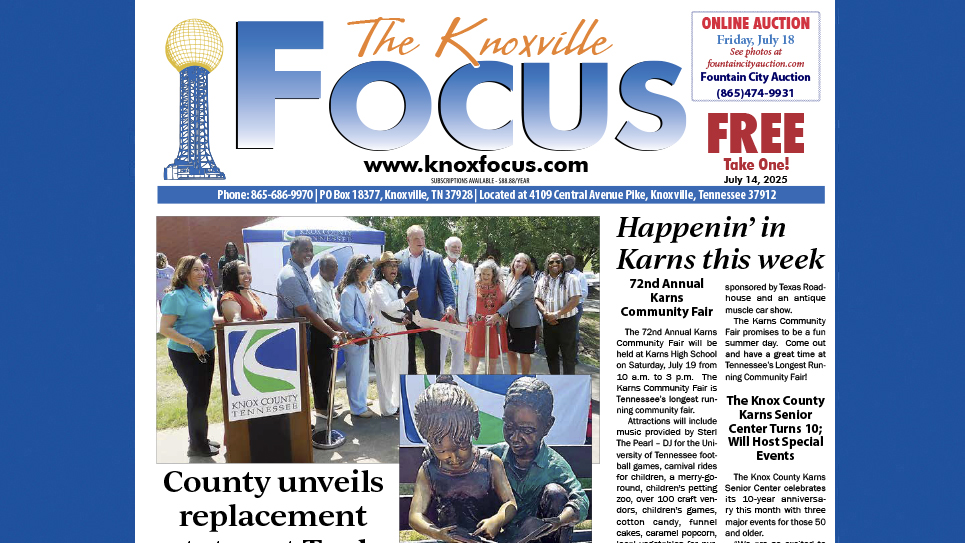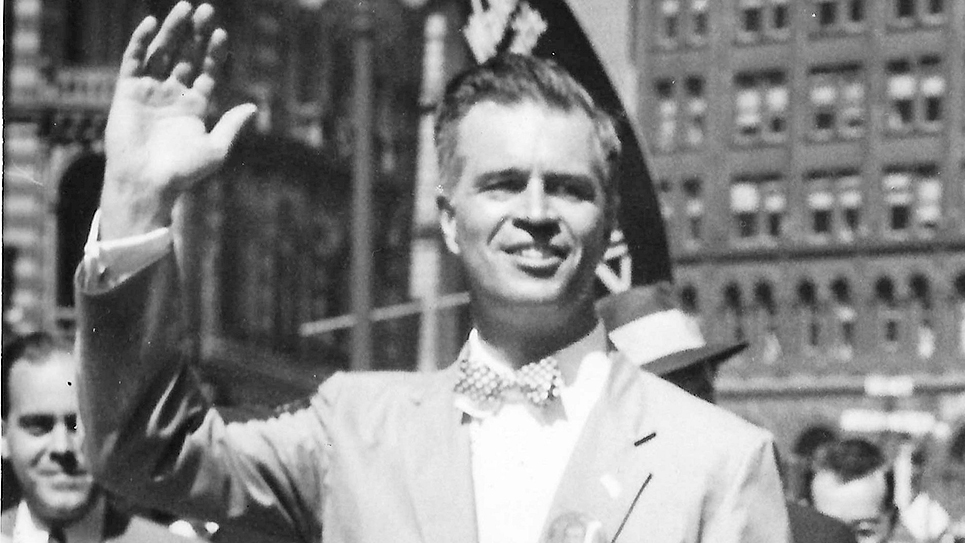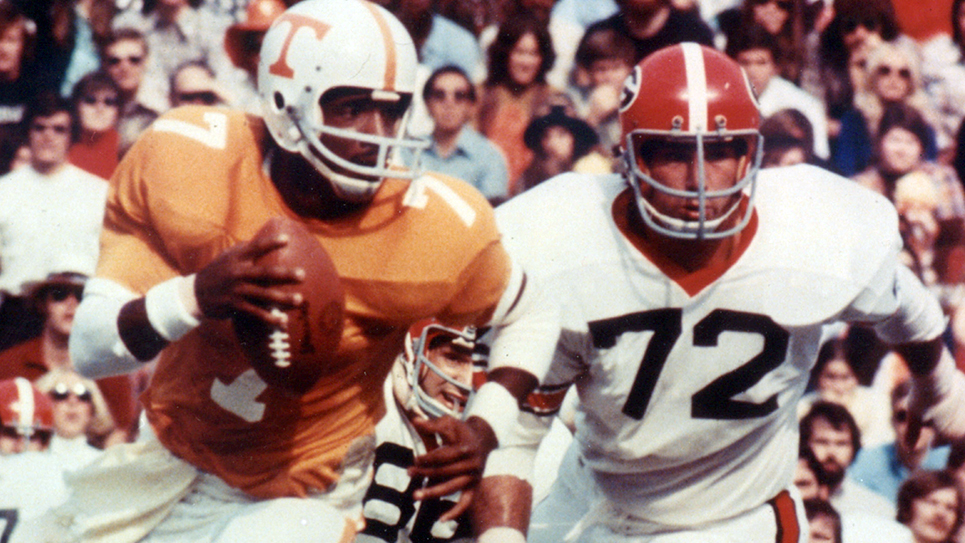By Tom Mattingly
QUESTION: What does Neyland Stadium have in common with Wrigley Field?
ANSWER: It took an eternity for lights to come to both venues.
That raises another pertinent question.
How did we ever get along without lights illuminating the playing field, covered with artificial turf or the real stuff, on Shields-Watkins Field/Neyland Stadium? The 2 p.m. kickoff was an article of faith, with the only adjustment being a move to 1:30 p.m. when the time changed.
When you look at some of the game films and photos from Tennessee games in the 1950s into the 1970s, things would get pretty dark, especially in the southwest corner, late in the game. That was even before the completion of the south upper deck, and it was a major concern for grass guru Bob Campbell when grass made its comeback in 1994.
When there was a game with a late kickoff (check out the videotape of the waning moments of the 1968 Georgia game) or even late November games when the sky darkened, it looked as if winter might arrive at any moment. The lengthening shadows from the Tom Elam Press Box gave the stadium a unique look, a unique ambiance, one to be revered and savored.
Lights came to Neyland Stadium for the Penn State game on Sept. 16, 1972, 50 years ago this season. It might have been an artful dodge on Bob Woodruff’s part to avoid playing Penn State in either Memphis or State College, as Joe Paterno had wanted, but the decision to put in lights has changed things irrevocably.
Old-timers used to the single-wing, leather helmets, and the afternoon newspaper winced and saw night football exemplifying the impending decline of civilization as they knew it.
For his part, Ward Gossett (“Volunteers Handbook: Stories, Stats and Stuff About Tennessee Football’) reported that the cost of firing up the lights in 1972 was $67.90 per hour.
For the media covering each team, deadlines became tighter and tighter.
“Night football was not compatible with deadlines,” Marvin West has said. “Some trying to earn a living as reporters and writers were stressed.”
There were also a number of long nights for P.H. Carter, who hawked the early edition of the KN-S next to the old KUB building on Gay Street at Church Avenue. His business suffered terribly when game times inched closer and closer to Saturday night deadlines.
Fans from that long-ago day had no idea that multi-million dollar television contracts were in the offing a couple of decades later. More games on television ultimately led to the Tennessee and SEC brand being beamed to the nation at all hours, day or night. These decisions are always a matter of balance between national exposure and capacity crowds, proponents say, not to mention a considerable amount of money.
There were early season games played at night in ensuing seasons after 1972, generally no more than two a season. There were four nocturnal games in Knoxville in 1999, 2002 and 2004, many, if not all, with starting times dictated by television.
There was a November night game in 1983 against Ole Miss televised on WTBS, when temperatures dropped precipitously. U.T. president Ed Boling proclaimed no more November night games, that decree lasting until 1999, when Notre Dame and ESPN came calling.
Lights are now part of the game, regardless of the starting time, 12:30 p.m., 2 p.m., 3:30 p.m., etc. It’s weird to see the stadium lights shining brightly on October Saturday afternoons when there’s still plenty of sun and not a cloud in the sky.
The other side of that coin was an overcast and dreary November 12, 1988, afternoon in Oxford, Miss., when Tennessee and Ole Miss squared off in Vaught-Hemingway Stadium. That was just before Ole Miss progressed to installing lights.
Things looked better on the ”Johnny Majors Show” the next day than they did from the press box. When the game was in progress, there were players in orange and white and red, white, and blue on the field, but good luck figuring out who they were. Tennessee won that day by a 20-12 count, but it wasn’t easy, in the stands or through a pair of binoculars in the Vol Network booth.
There’s the impact on the fans who faithfully follow their team, who show up whenever the game might be scheduled. That’s to their credit.
No one in 1972 could have possibly realized how things would change once lights became part of the stadium.
In many ways, fans always seem to pay their money and take their chances.






